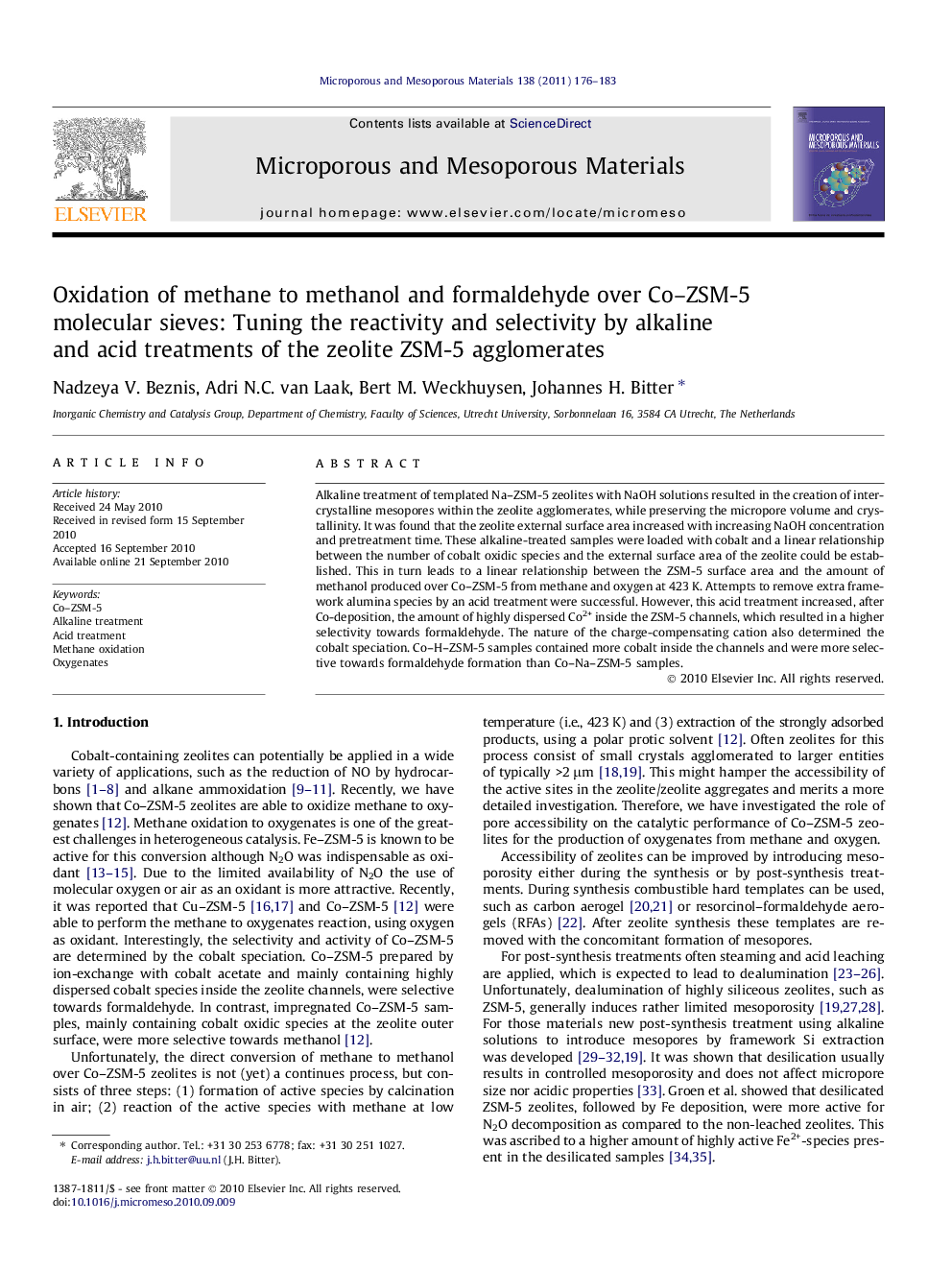| Article ID | Journal | Published Year | Pages | File Type |
|---|---|---|---|---|
| 74830 | Microporous and Mesoporous Materials | 2011 | 8 Pages |
Alkaline treatment of templated Na–ZSM-5 zeolites with NaOH solutions resulted in the creation of intercrystalline mesopores within the zeolite agglomerates, while preserving the micropore volume and crystallinity. It was found that the zeolite external surface area increased with increasing NaOH concentration and pretreatment time. These alkaline-treated samples were loaded with cobalt and a linear relationship between the number of cobalt oxidic species and the external surface area of the zeolite could be established. This in turn leads to a linear relationship between the ZSM-5 surface area and the amount of methanol produced over Co–ZSM-5 from methane and oxygen at 423 K. Attempts to remove extra framework alumina species by an acid treatment were successful. However, this acid treatment increased, after Co-deposition, the amount of highly dispersed Co2+ inside the ZSM-5 channels, which resulted in a higher selectivity towards formaldehyde. The nature of the charge-compensating cation also determined the cobalt speciation. Co–H–ZSM-5 samples contained more cobalt inside the channels and were more selective towards formaldehyde formation than Co–Na–ZSM-5 samples.
Graphical abstractFigure optionsDownload full-size imageDownload as PowerPoint slideResearch highlights► Alkaline treatment of Na–ZSM-5 resulted in the creation of intercrystalline mesopores within the zeolite agglomerates an increase of the external surface area. ► A higher external surface area accommodated a higher number of Co3O4 and CoO species, which resulted in a higher overall selectivity to methanol. ► The nature of the cation is crucial for the selectivity as well. Co–Na–ZSM-5 samples were more selective towards methanol than Co–H–ZSM-5.
